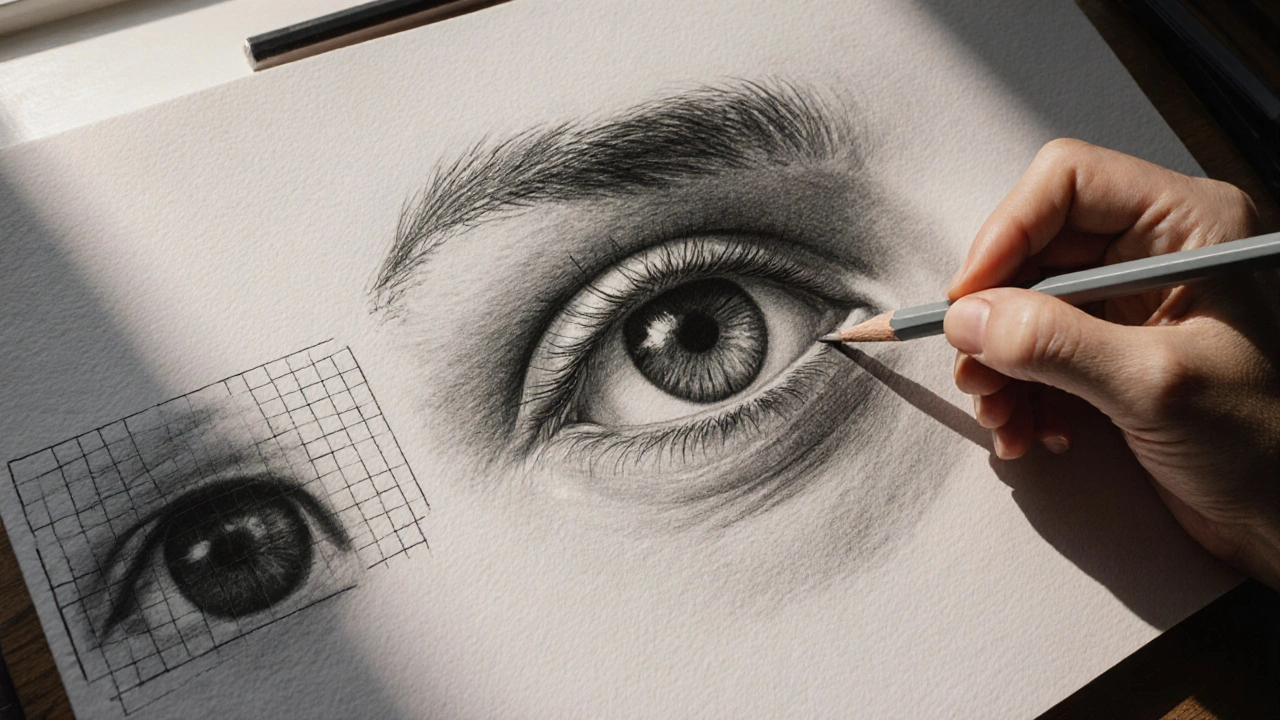Realistic Drawing: How to Capture Life on Paper with Precision
When you look at a realistic drawing, a highly detailed artwork that mimics the appearance of a photograph through precise line, shading, and texture. Also known as photorealism, it doesn’t just copy what’s in front of you—it forces you to see the hidden shapes, shadows, and contrasts that make objects feel real. This isn’t about being perfect. It’s about being observant. Realistic drawing trains your eyes to notice how light falls on a crumpled shirt, how a fingerprint curves around a glass, or how the edge of a leaf catches the sun just before it fades into shadow.
Many people think you need years of training to pull this off, but the truth is, it’s more about method than talent. Artists who master this style break down complex subjects into simple shapes, then build up layers of tone—starting with the darkest darks and working toward the lightest lights. Tools like graphite pencils, blending stumps, and erasers become extensions of their hands. And while photorealism, a subset of realistic drawing where the final image looks indistinguishable from a photo gets all the attention, the foundation is the same: patience, repetition, and a refusal to guess. Even small mistakes—like misjudging the angle of a nose or the curve of a wrist—can break the illusion. That’s why so many artists start with still lifes: a bowl of fruit, a pair of glasses, a coffee mug. These everyday objects are the perfect teachers because they don’t move, and they don’t lie.
There’s also a quiet power in realistic drawing that you don’t find in abstract or stylized art. It doesn’t shout. It doesn’t need color or drama. A single pencil line, placed just right, can make you pause and wonder how someone made something that looks so real from nothing but graphite and paper. That’s the magic. And it’s why so many artists today—whether they work in charcoal, ink, or digital media—still come back to it. It’s the ultimate test of control, perception, and discipline.
What you’ll find in the posts below aren’t just tutorials or before-and-after comparisons. You’ll see how artists use realistic drawing to tell deeper stories—like how a wrinkled hand can carry a lifetime of work, or how a single drop of water on a window can turn an ordinary moment into something hauntingly beautiful. Some pieces are so detailed they blur the line between drawing and photography. Others use realism as a foundation, then twist it with subtle surreal touches. You’ll learn the secrets behind the most convincing textures, how to avoid common mistakes that ruin the illusion, and why some of the most powerful drawings are the ones that look like they could be real—but aren’t quite.

